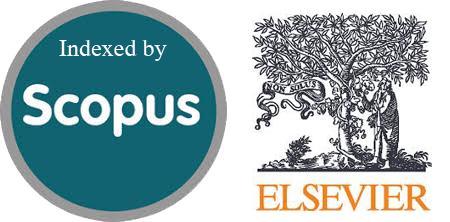Physiological Mechanisms of Acute Resistance Training in Reducing Blood Glucose Levels in Women with a Sedentary Lifestyle: A Randomized Controlled Trial
DOI:
https://doi.org/10.54133/ajms.v9i2.2482Keywords:
Blood glucose, Physical exercise, Resistance training, Sedentary lifeAbstract
Background: Women with a sedentary lifestyle are prone to metabolic disorders, including insulin resistance and increased blood glucose levels, which are important risk factors for cardiovascular disease and type 2 diabetes. Acute physical exercise has been shown to increase glucose uptake by skeletal muscle. Objective: To determine how resistance training affects aerobic exercise on blood glucose levels in women with a sedentary lifestyle. Methods: This study involved thirty-three healthy women with a sedentary lifestyle. Experimental and control groups before and after were used in this experimental study. People were selected through random sampling and allocated to the treatment group (RT), which received resistance exercise intervention, or the aerobic exercise group (AT), while the control group (CO) did not do any activity. Data collection took place over two days, starting with the collection of information regarding the characteristics of the subjects. The volunteers' blood was then taken as pre-test data before going to the activity. The participants were then instructed to warm up. Thereafter, the participants are engaged in group-specific physical activities. Resistance and aerobic activities were among the exercises done. After the exercise intervention, blood samples were taken as post-test data. Results: Blood glucose levels in the resistance training group experienced a significant decrease in women with a sedentary lifestyle. Conclusions: The results demonstrated that acute resistance training significantly reduced blood glucose levels. Therefore, resistance training is highly recommended, especially for people with a sedentary lifestyle, to prevent various diseases and adverse effects of sedentary lifestyles.
Downloads
References
Park JH, Moon JH, Kim HJ, Kong MH, Oh YH. Sedentary lifestyle: Overview of updated evidence of potential health risks. Korean J Fam Med. 2020;41(6):365–373. doi: 10.4082/KJFM.20.0165. DOI: https://doi.org/10.4082/kjfm.20.0165
Sukatemin S, Muhalla HI, Muarrofah M, Utari DA, Fitriani VY. Sedentary lifestyle and the threat of obesity among young people. J Acad Sci. 2025;2(1):232–240. doi: 10.59613/3cjm3157. DOI: https://doi.org/10.59613/3cjm3157
Kim Y, Lee E. The association between elderly people's sedentary behaviors and their health-related quality of life: focusing on comparing the young-old and the old-old. Health Qual Life Outcomes. 2019;17(1):131. doi: 10.1186/s12955-019-1191-0. DOI: https://doi.org/10.1186/s12955-019-1191-0
Boutari C, Mantzoros CS. A 2022 update on the epidemiology of obesity and a call to action: as its twin COVID-19 pandemic appears to be receding, the obesity and dysmetabolism pandemic continues to rage on. Metabolism. 2022;133:155217. doi: 10.1016/j.metabol.2022.155217. DOI: https://doi.org/10.1016/j.metabol.2022.155217
Klein S, Gastaldelli A, Yki-Järvinen H, Scherer PE. Why does obesity cause diabetes? Cell Metab. 2022;34(1):11-20. doi: 10.1016/j.cmet.2021.12.012. DOI: https://doi.org/10.1016/j.cmet.2021.12.012
Chooi YC, Ding C, Magkos F. The epidemiology of obesity. Metabolism. 2019;92:6–10. doi: 10.1016/j.metabol.2018.09.005. DOI: https://doi.org/10.1016/j.metabol.2018.09.005
Saklayen MG. The global epidemic of the metabolic syndrome. Curr Hypertens Rep. 2018;20(2):12. doi: 10.1007/s11906-018-0812-z. DOI: https://doi.org/10.1007/s11906-018-0812-z
Ambelu T, Teferi G. The impact of exercise modalities on blood glucose, blood pressure and body composition in patients with type 2 diabetes mellitus. BMC Sports Sci Med Rehabil. 2023;15(1):153. doi: 10.1186/s13102-023-00762-9. DOI: https://doi.org/10.1186/s13102-023-00762-9
Bird SR, Hawley JA. Update on the effects of physical activity on insulin sensitivity in humans. BMJ Open Sport Exerc Med. 2017;2(1):e000143. doi: 10.1136/bmjsem-2016-000143. DOI: https://doi.org/10.1136/bmjsem-2016-000143
Schwingshackl L, Missbach B, Dias S, König J, Hoffmann G. Impact of different training modalities on glycaemic control and blood lipids in patients with type 2 diabetes: a systematic review and network meta-analysis. Diabetologia. 2014;57(9):1789-1797. doi: 10.1007/s00125-014-3303-z. DOI: https://doi.org/10.1007/s00125-014-3303-z
Dutton RA, Khadavi MJ, Fredericson M. Update on rehabilitation of patellofemoral pain. Curr Sports Med Rep. 2014;13(3):172-178. doi: 10.1249/JSR.0000000000000056. DOI: https://doi.org/10.1249/JSR.0000000000000056
Moghaddam MHB, Aghdam FB, Jafarabadi MA, Allahverdipour H, Nikookheslat SD, Safarpour S. The Iranian version of International Physical Activity Questionnaire (IPAQ) in Iran: Content and construct validity, factor structure, internal consistency and stability,” World Appl Sci J. 2012;18(8)1073–1080, 2012, doi: 10.5829/idosi.wasj.2012.18.08.754.
Amanat S, Sinaei E, Panji M, MohammadporHodki R, Bagheri-Hosseinabadi Z, Asadimehr H, et al. A Randomized controlled trial on the effects of 12 weeks of aerobic, resistance, and combined exercises training on the serum levels of nesfatin-1, irisin-1 and HOMA-IR. Front Physiol. 2020;11:562895. doi: 10.3389/fphys.2020.562895. DOI: https://doi.org/10.3389/fphys.2020.562895
Brzycki M. Strength testing—Predicting a one-rep max from reps-to-fatigue. J Phys Educ. Recreat Danc. 1993;64(1):88–90. doi: 10.1080/07303084.1993.10606684. DOI: https://doi.org/10.1080/07303084.1993.10606684
Tanaka H, Monahan KD, Seals DR. Age-predicted maximal heart rate revisited. J Am Coll Cardiol. 2001;37(1):153-56. doi: 10.1016/s0735-1097(00)01054-8. DOI: https://doi.org/10.1016/S0735-1097(00)01054-8
Al-Rawaf HA, Gabr SA, Iqbal A, Alghadir AH. High-intensity interval training improves glycemic control, cellular apoptosis, and oxidative stress of type 2 diabetic patients. Medicina (Kaunas). 2023;59(7):1320. doi: 10.3390/medicina59071320. DOI: https://doi.org/10.3390/medicina59071320
Kartinah NT, Rusli H, Ilyas EII, Andraini T, Paramita N. High-intensity interval training increases AMPK and GLUT4 expressions via FGF21 in skeletal muscles of diabetic rats. J Adv Biotechnol Exp Ther. 2024;7(1):136–146. doi: 10.5455/jabet.2024.d12. DOI: https://doi.org/10.5455/jabet.2024.d12
Zheng X, Qi Y, Bi L, Shi W, Zhang Y, Zhao D, et al. Effects of exercise on blood glucose and glycemic variability in type 2 diabetic patients with Dawn phenomenon. Biomed Res Int. 2020;2020:6408724. doi: 10.1155/2020/6408724. DOI: https://doi.org/10.1155/2020/6408724
Li S, Yuan S, Zhang J, Xu F, Zhu F. The effect of periodic resistance training on obese patients with type 2 diabetic nephropathy. Sci Rep. 2024;14(1):2761. doi: 10.1038/s41598-024-53333-4. DOI: https://doi.org/10.1038/s41598-024-53333-4
Duruturk N, Özköslü MA. Effect of tele-rehabilitation on glucose control, exercise capacity, physical fitness, muscle strength and psychosocial status in patients with type 2 diabetes: A double blind randomized controlled trial. Prim Care Diabetes. 2019;13(6):542-548. doi: 10.1016/j.pcd.2019.03.007. DOI: https://doi.org/10.1016/j.pcd.2019.03.007
Pires NF, Coelho-Júnior HJ, Gambassi BB, de Faria APC, Ritter AMV, de Andrade Barboza C, et al. Combined aerobic and resistance exercises evokes longer reductions on ambulatory blood pressure in resistant hypertension: A randomized crossover trial. Cardiovasc Ther. 2020;2020:8157858. doi: 10.1155/2020/8157858. DOI: https://doi.org/10.1155/2020/8157858
Messina G, Alioto A, Parisi MC, Mingrino O, Di Corrado D, Crescimanno C, et al. Experimental study on physical exercise in diabetes: pathophysiology and therapeutic effects. Eur J Transl Myol. 2023;33(4):11560. doi: 10.4081/ejtm.2023.11560. DOI: https://doi.org/10.4081/ejtm.2023.11560
Naimi SS, Rahbar S, Asadi MR, Radinmehr H, Talimkhani A, Doosti-Irani A, et al. The immediate effects of aerobic exercise with and without external loads on blood glucose, cardiovascular, respiratory, and body temperature indices in type II diabetic patients. J Tehran Heart Cent. 2023;18(1):39-45. doi: 10.18502/jthc.v18i1.12580. DOI: https://doi.org/10.18502/jthc.v18i1.12580
Shamsnia E, Matinhomaee H, Azarbayjani MA, Peeri M. The effect of aerobic exercise on oxidative stress in skeletal muscle tissue: A narrative review. Gene Cell Tissue. 2023;10(4):e131964. doi: 10.5812/gct-131964. DOI: https://doi.org/10.5812/gct-131964
Gejl KD, Andersson EP, Nielsen J, Holmberg HC, Ørtenblad N. Effects of acute exercise and training on the sarcoplasmic reticulum Ca2+ release and uptake rates in highly trained endurance athletes. Front Physiol. 2020;11:810. doi: 10.3389/fphys.2020.00810. DOI: https://doi.org/10.3389/fphys.2020.00810
Tokumitsu H, Sakagami H. Molecular mechanisms underlying Ca2+/calmodulin-dependent protein kinase kinase signal transduction. Int J Mol Sci. 2022;23(19):11025. doi: 10.3390/ijms231911025. DOI: https://doi.org/10.3390/ijms231911025
Chen M, Zhu JY, Mu WJ, Luo HY, Li Y, Li S, et al. Cdo1-Camkk2-AMPK axis confers the protective effects of exercise against NAFLD in mice. Nat Commun. 2023;14(1):8391. doi: 10.1038/s41467-023-44242-7. DOI: https://doi.org/10.1038/s41467-023-44242-7
Sorriento D, Di Vaia E, Iaccarino G. Physical exercise: A novel tool to protect mitochondrial health. Front Physiol. 2021;12:660068. doi: 10.3389/fphys.2021.660068. DOI: https://doi.org/10.3389/fphys.2021.660068
Richter EA. Is GLUT4 translocation the answer to exercise-stimulated muscle glucose uptake? Am J Physiol Endocrinol Metab. 2021;320(2):E240-E243. doi: 10.1152/ajpendo.00503.2020. DOI: https://doi.org/10.1152/ajpendo.00503.2020
Al-Awadi AA, Gray SR, Al-Ozairi E. Are strategies to increase muscle mass and strength as effective in people with type 2 diabetes? Rev Endocr Metab Disord. 2025. doi: 10.1007/s11154-025-09947-8. DOI: https://doi.org/10.1007/s11154-025-09947-8
Geirsdottir OG, Arnarson A, Briem K, Ramel A, Jonsson PV, Thorsdottir I. Effect of 12-week resistance exercise program on body composition, muscle strength, physical function, and glucose metabolism in healthy, insulin-resistant, and diabetic elderly Icelanders. J Gerontol A Biol Sci Med Sci. 2012;67(11):1259-1265. doi: 10.1093/gerona/gls096. DOI: https://doi.org/10.1093/gerona/gls096
Schoenfeld BJ. The mechanisms of muscle hypertrophy and their application to resistance training. J Strength Cond Res. 2010;24(10):2857-2872. doi: 10.1519/JSC.0b013e3181e840f3. DOI: https://doi.org/10.1519/JSC.0b013e3181e840f3
Cho SC, Shaw SY. Tea seed saponin reduced extract ameliorates palmitic acid induced insulin resistance in HepG2 cells. Mol Med Rep. 2024;29(2):26. doi: 10.3892/mmr.2023.13149. DOI: https://doi.org/10.3892/mmr.2023.13149
Chavanelle V, Boisseau N, Otero YF, Combaret L, Dardevet D, Montaurier C, et al. Effects of high-intensity interval training and moderate-intensity continuous training on glycaemic control and skeletal muscle mitochondrial function in db/db mice. Sci Rep. 2017;7(1):204. doi: 10.1038/s41598-017-00276-8. DOI: https://doi.org/10.1038/s41598-017-00276-8
Asfaw MS, Dagne WK. Physical activity can improve diabetes patients' glucose control; A systematic review and meta-analysis. Heliyon. 2022;8(12):e12267. doi: 10.1016/j.heliyon.2022.e12267. DOI: https://doi.org/10.1016/j.heliyon.2022.e12267
Flores-Opazo M, McGee SL, Hargreaves M. Exercise and GLUT4. Exerc Sport Sci Rev. 2020;48(3):110-118. doi: 10.1249/JES.0000000000000224. DOI: https://doi.org/10.1249/JES.0000000000000224
Wang T, Wang J, Hu X, Huang XJ, Chen GX. Current understanding of glucose transporter 4 expression and functional mechanisms. World J Biol Chem. 2020;11(3):76-98. doi: 10.4331/wjbc.v11.i3.76. DOI: https://doi.org/10.4331/wjbc.v11.i3.76
Evans P, Shawna M, Luke W, Carol W. Physical exercise induces increased translocation of type 4 glucose transporters (GLUT4): a systematic review. Nutrients. 2019;11(10):1–24. doi: 10.47197/retos.v59.104078. DOI: https://doi.org/10.47197/retos.v59.104078
Klip A, McGraw TE, James DE. Thirty sweet years of GLUT4. J Biol Chem. 2019;294(30):11369-11381. doi: 10.1074/jbc.REV119.008351. DOI: https://doi.org/10.1074/jbc.REV119.008351
Barrett MR, Scott Davis M. Conditioning-induced expression of novel glucose transporters in canine skeletal muscle homogenate. PLoS One. 2023;18(5):e0285424. doi: 10.1371/journal.pone.0285424. DOI: https://doi.org/10.1371/journal.pone.0285424
Espelage L, Al-Hasani H, Chadt A. RabGAPs in skeletal muscle function and exercise. J Mol Endocrinol. 2020;64(1):R1-R19. doi: 10.1530/JME-19-0143. PMID: 31627187. DOI: https://doi.org/10.1530/JME-19-0143
Lao XQ, Deng HB, Liu X, Chan TC, Zhang Z, Chang LY, et al. Increased leisure-time physical activity associated with lower onset of diabetes in 44 828 adults with impaired fasting glucose: a population-based prospective cohort study. Br J Sports Med. 2019;53(14):895-900. doi: 10.1136/bjsports-2017-098199. DOI: https://doi.org/10.1136/bjsports-2017-098199
Dlamini M, Khathi A. Prediabetes-associated changes in skeletal muscle function and their possible links with diabetes: A literature review. Int J Mol Sci. 2023;25(1):469. doi: 10.3390/ijms25010469. DOI: https://doi.org/10.3390/ijms25010469

Downloads
Published
How to Cite
Issue
Section
License
Copyright (c) 2025 Al-Rafidain Journal of Medical Sciences ( ISSN 2789-3219 )

This work is licensed under a Creative Commons Attribution-NonCommercial-ShareAlike 4.0 International License.
Published by Al-Rafidain University College. This is an open access journal issued under the CC BY-NC-SA 4.0 license (https://creativecommons.org/licenses/by-nc-sa/4.0/).











